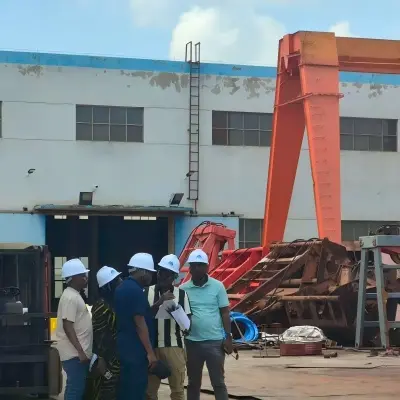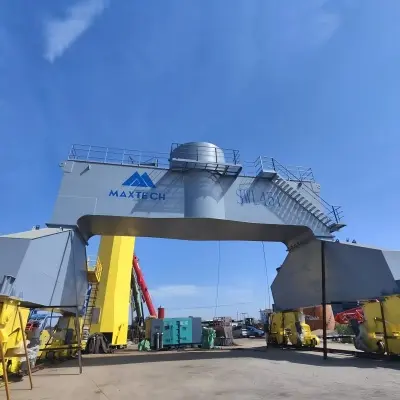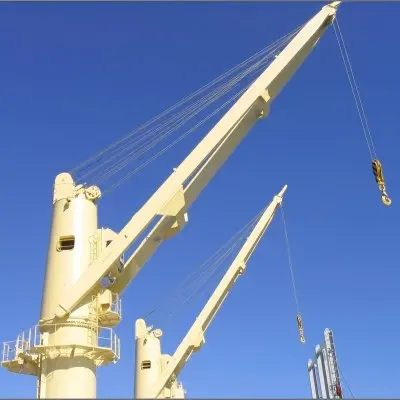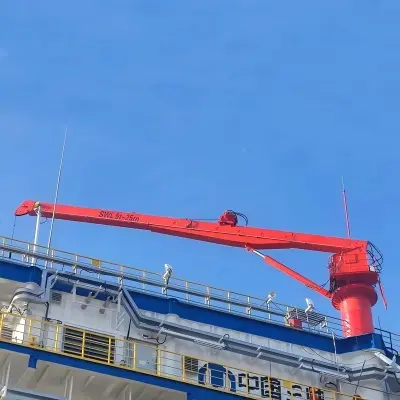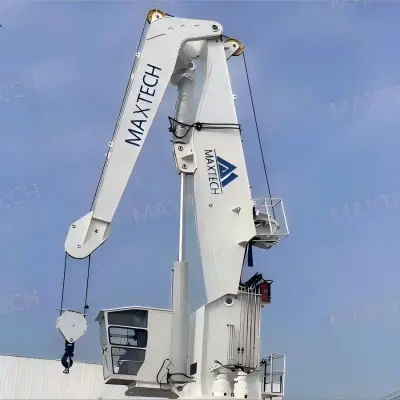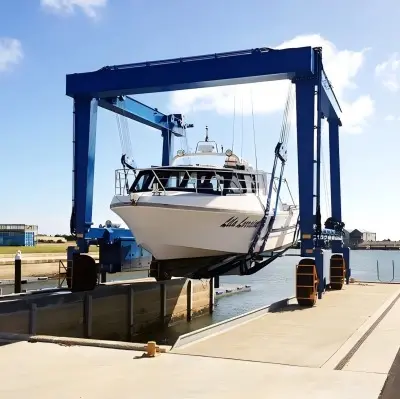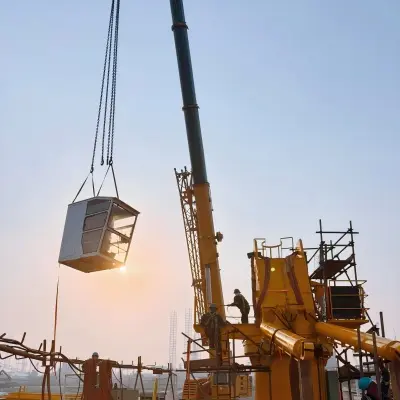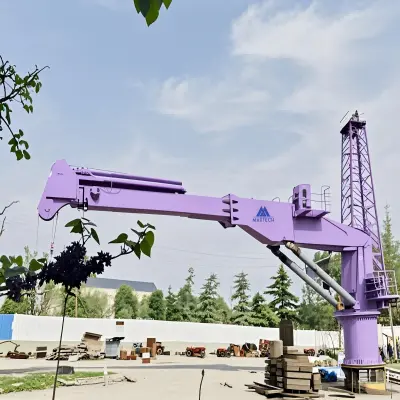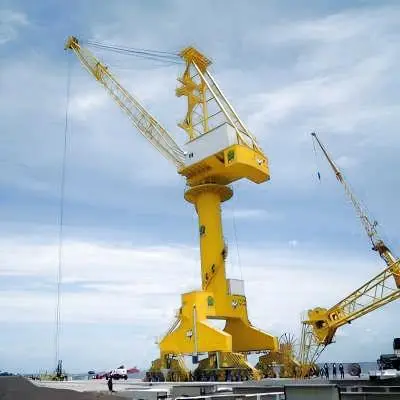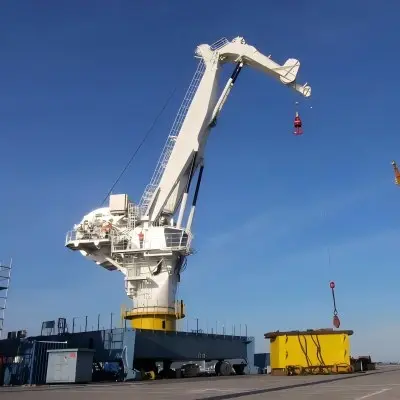0102030405
Working Principle and Application Scenarios of Ship Cranes
2025-05-12
Ship Cranes, an essential part of the maritime and port infrastructure, come in a wide variety of types, each designed to meet specific operational requirements. Among them,ship deck cranes, also known as marine cranes or deck cranes, are particularly crucial for on - board operations. The family of ship cranes includes electrical hydraulic cranes, hydraulic cranes, telescopic Boom Cranes, provision cranes, electrical cranes, lifting cranes, stiff boom cranes, and knuckle boom cranes.
Working Principles of Different Ship Cranes
Hydraulic cranes are a common type in the ship crane family. They operate based on Pascal's principle, which states that pressure applied to an enclosed fluid is transmitted undiminished to every portion of the fluid and the walls of the containing vessel. In a hydraulic crane, an engine powers a hydraulic pump. This pump pressurizes an oil - based or fluid medium within the hydraulic system. Since oil is incompressible, the pressure is transferred throughout the system.
The pressurized fluid then acts on pistons. When the fluid is directed to a piston - cylinder arrangement, it causes the piston to move. For example, in the boom - lifting mechanism of a hydraulic crane, the extension or retraction of the piston can raise or lower the boom. The force generated by the hydraulic system allows these cranes to lift extremely heavy loads. The lifting capacity of a hydraulic crane is rated according to its construction and the strength of the hydraulic system. A 10 - ton hydraulic crane, for instance, can lift up to 10 tons (9,070 kg).
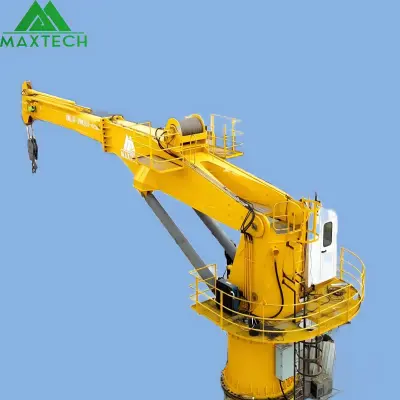
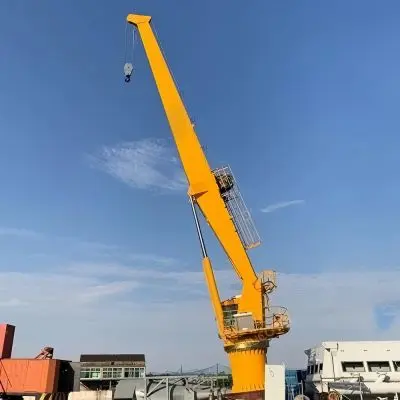
Electrical hydraulic cranes combine the features of both electrical and hydraulic systems. They typically use an electric motor to power the hydraulic pump. The advantage of this setup is that it can operate without running the main engine of the ship or the vehicle it is mounted on. This not only saves fuel but also reduces noise pollution.
These cranes are available in different models with various lift capacities and horizontal reaches. Some models can lift loads ranging from a few hundred pounds to several thousand pounds, with horizontal reaches from 15 feet to 21 feet or more. The electrical component provides precise control over the hydraulic system, allowing for more accurate and delicate lifting operations. For example, in applications where the crane needs to place a load with high precision, such as in the installation of sensitive equipment on a ship's deck, the electrical - hydraulic control system can be adjusted to provide the necessary level of control.
Telescopic boom cranes are characterized by their telescoping booms. The boom consists of multiple sections that can slide in and out of each other. This design allows the crane to adjust its length, enabling it to reach different heights and distances.
The extension and retraction of the telescopic boom are usually achieved through a hydraulic mechanism. Hydraulic cylinders are used to push or pull the sections of the boom. When the crane needs to reach a distant object or lift a load from a higher position, the boom is extended. The ability to adjust the length of the boom makes telescopic boom cranes highly versatile for various applications, both on ships and in ports.
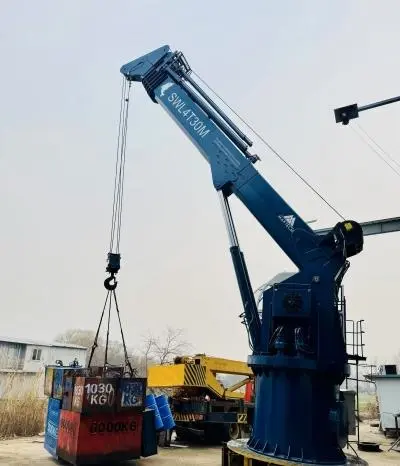
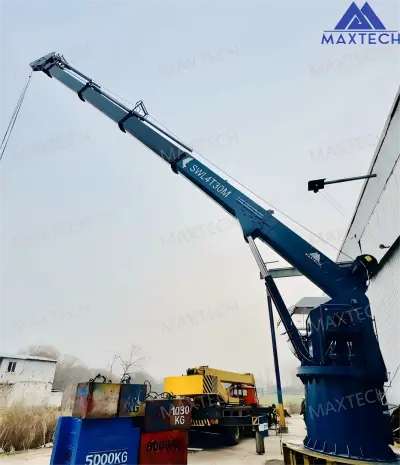
Knuckle boom cranes have an articulating arm that can be folded and extended. This arm, or boom, is composed of multiple segments connected by joints (knuckles). The knuckles allow the boom to move in a more flexible manner compared to a straight - boom crane.
The movement of the knuckle boom is controlled by hydraulic cylinders attached to the different segments of the boom. These cylinders can extend or retract to change the angle and position of each segment. Knuckle boom cranes are very useful for accessing areas that are difficult to reach with a straight - boom crane, such as around obstacles on a ship's deck or in tight - spaced port areas.
Ship cranes, with their diverse types and functions, are the workhorses of the maritime industry. From the basic hydraulic crane that uses fluid pressure to lift heavy loads to the more sophisticated electrical - hydraulic and telescopic boom cranes, each type has its own unique working principle. Their application scenarios range from on - board ship operations like cargo handling and maintenance to large - scale port operations and complex offshore installations. As the maritime industry continues to grow and evolve, ship cranes will undoubtedly play an even more significant role in facilitating global trade and ensuring the smooth operation of various marine - related activities.

